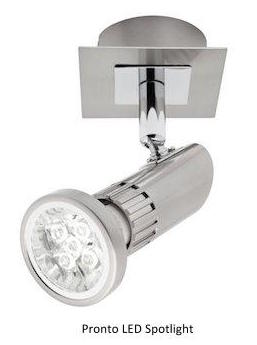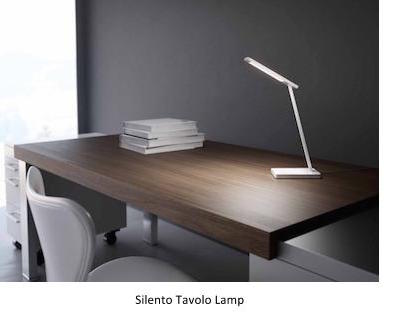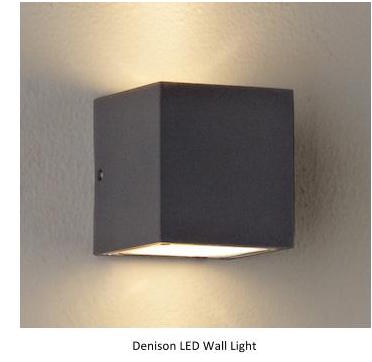
The Benefits of LED Lighting
Light emitting diode - or LED - is the best option in lighting that you can choose. It’s been proven to be more sustainable than incandescent or fluorescent lighting, and is much better for the environment than other lights. The benefits of LED lighting are many, and LEDs come out on top when compared with incandescent or fluorescent lights for a multitude of reasons.
They are better for the environment, better for your household, and better for your bank account! So with those power bills looming and the environment in a decline, find out why you should switch to LED lighting today!
What are the benefits of LEDs?
Environmentally Friendly:
- LEDs can last up to 50 000 hours - which is about 4 times longer than fluorescents, and about 50 times longer than standard incandescent bulbs. 50 000 hours is very long time - if your LED is turned on for 8 hours per day, it’d be over 17 years before it needs changing! Your normal incandescent bulb will blow in only around one year.
- The exceptionally long life of LED lights means changing the bulbs far less often than other lights. This means far less waste going to landfill, and much less stress is put on the environment.
- LED lights don’t contain any harmful materials like mercury or lead, unlike other lights. Your ordinary fluorescent light has mercury in it, and is technically a hazardous material when disposing of the bulb - especially if it breaks. You don’t have to worry about this at all with LEDs, making them safer for you at home and the environment once they are disposed of.
- There is no UV radiation emitted from most LED lights. This means you can light artwork, manuscripts, and artefacts with LEDs with no harm to them - UV radiation causes wear on art canvasses, paper, and the like. If this is an issue for you, just make sure the one you choose doesn’t emit UV radiation.
- LEDs use far less power to light a room, so the carbon emissions from creating that power are lowered. In comparison to other lights, LEDs use 90% less power than incandescents or halogens, and 30% less power than fluorescents.
- Most of the components of LED lights are made from recyclable materials, lessening the impact on landfill even more.
- Normal incandescent lights will use only about 20% of the power they require for light, and a lot of the rest goes into producing heat - which you don’t need, and can make your room slightly warmer. LED lights don’t produce that same heat, so your rooms will be just that little bit cooler.
Cost Effective:
 LEDs are cheaper than other lights, mainly because you don’t have to change the bulbs very often at all.They do have a higher installation cost than other lights, but only to make sure everything is done right and so you can get the best out of the light. After this installation cost however, they become extremely cheap to run.
LEDs are cheaper than other lights, mainly because you don’t have to change the bulbs very often at all.They do have a higher installation cost than other lights, but only to make sure everything is done right and so you can get the best out of the light. After this installation cost however, they become extremely cheap to run.
- The way LED lights use power is much more efficient than incandescent or fluorescent lights. Much less power is needed to make the same amount of light as other bulbs. This incredible power saving will save you lots of money on your electricity bill.
- LEDs need very little maintenance in their lifetime - just changing the bulb when need be. This will keep your general households costs down.
- The cost of LED lights has come down in recent years, while their effectiveness continues to rise, so they are not quite the huge investment that they used to be.
Other general advantages:
- Unlike other lights, LED bulbs don’t get hot - so it’s completely safe to be near enough to touch them while they’re switched on.
- LED lights turn on immediately when you flip the switch - meaning you don’t have to wait for the light to fully turn on before you can see anything, it happens straight away.
- They don’t flicker at all like fluorescents can, so they won’t hurt your eyes or pose any risk for epileptics.
 Most LEDs don’t attract bugs or insects - this is because they don’t emit UV radiation. You can use them in outdoor settings without worrying about annoying insects buzzing around. Just check that the LED you buy doesn’t emit UV radiation, and you’ll be set. LEDs are perfect for camping torches and lights for this very reason!
Most LEDs don’t attract bugs or insects - this is because they don’t emit UV radiation. You can use them in outdoor settings without worrying about annoying insects buzzing around. Just check that the LED you buy doesn’t emit UV radiation, and you’ll be set. LEDs are perfect for camping torches and lights for this very reason!
- Switching LEDs on and off frequently does not lessen their life, while constant switching on and off would affect most other bulbs.
- If you’re renovating or building a house that needs to meet energy conservation targets, LEDs are a perfect way to reduce your energy usage.
- When they first became available, many people didn’t like the “unnatural” coloured light that LEDs produced - a white or blue kind of light rather than the colour they were used to. This is no longer an issue, as you can get LEDs in the softer, warmer colours as well as the whiter, cooler colours. Just choose whichever colouration would suit the space you want to light!
Lighting makes up 20% of the world’s energy usage, so imagine how much power could be saved if everyone converted to LED lighting! It’s becoming more and more widely used across many different settings, and is the most sustainable form of lighting we currently have. Some of the most energy-conscious places in the world, like California and Germany, use LEDs all over the place - from street lights, to buildings, to houses - so get on board! This is a bandwagon you can definitely afford to jump on. LEDs are better for the environment, ideal for long-term use, and easy on your wallet!


